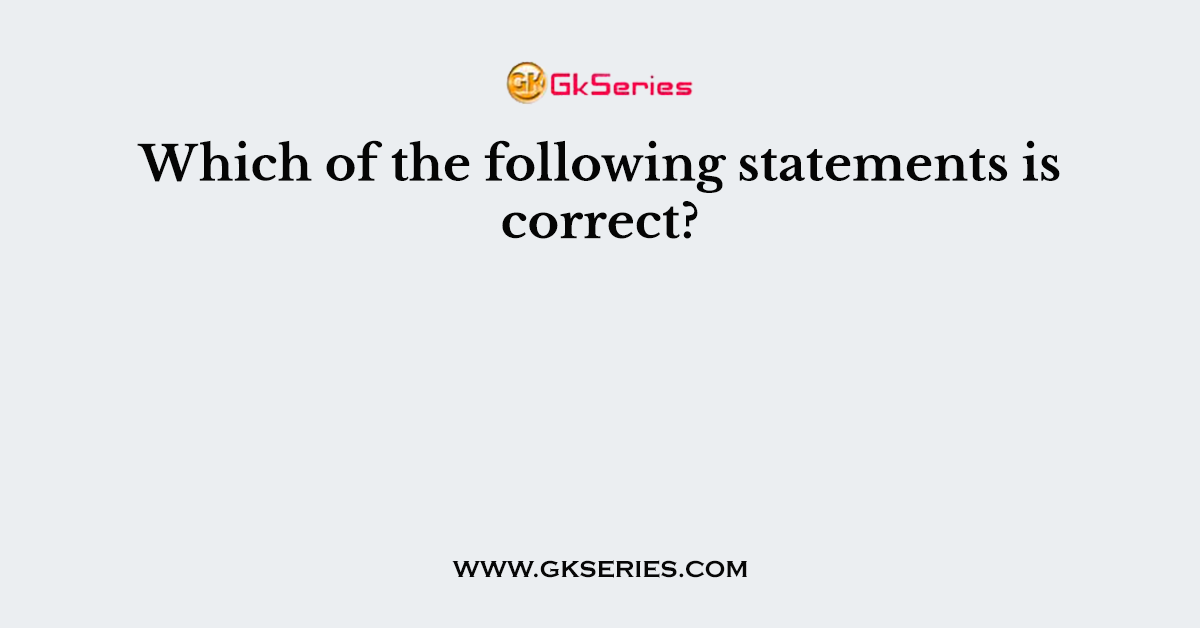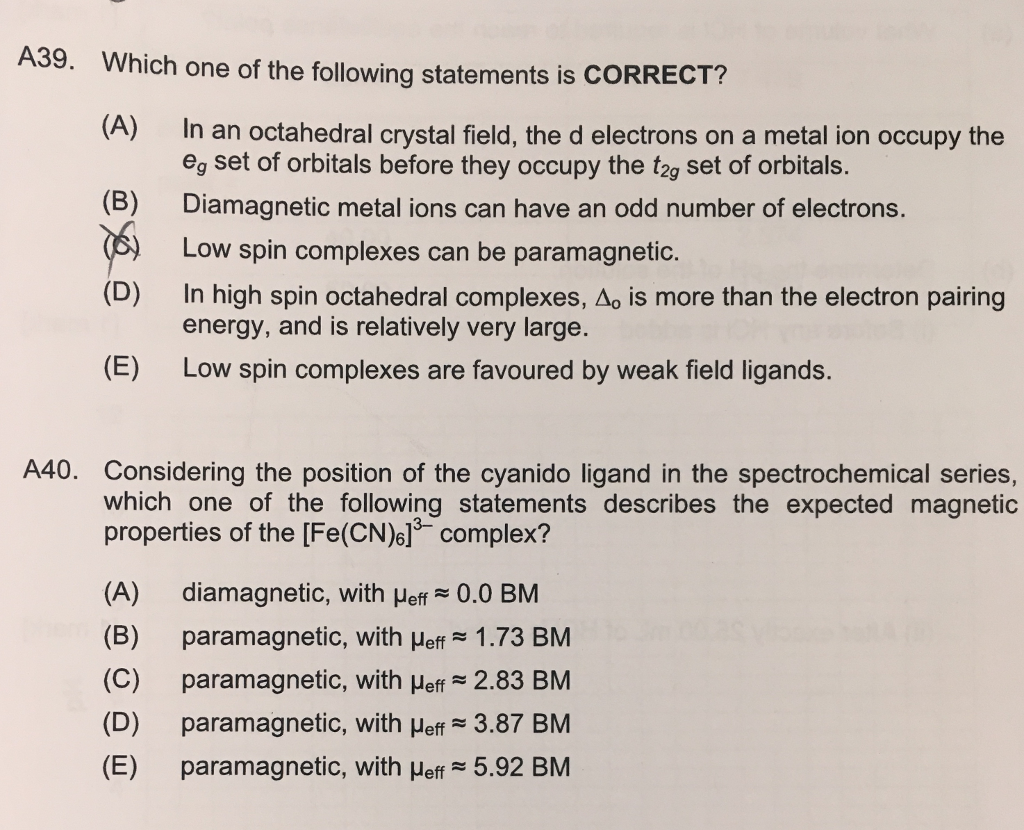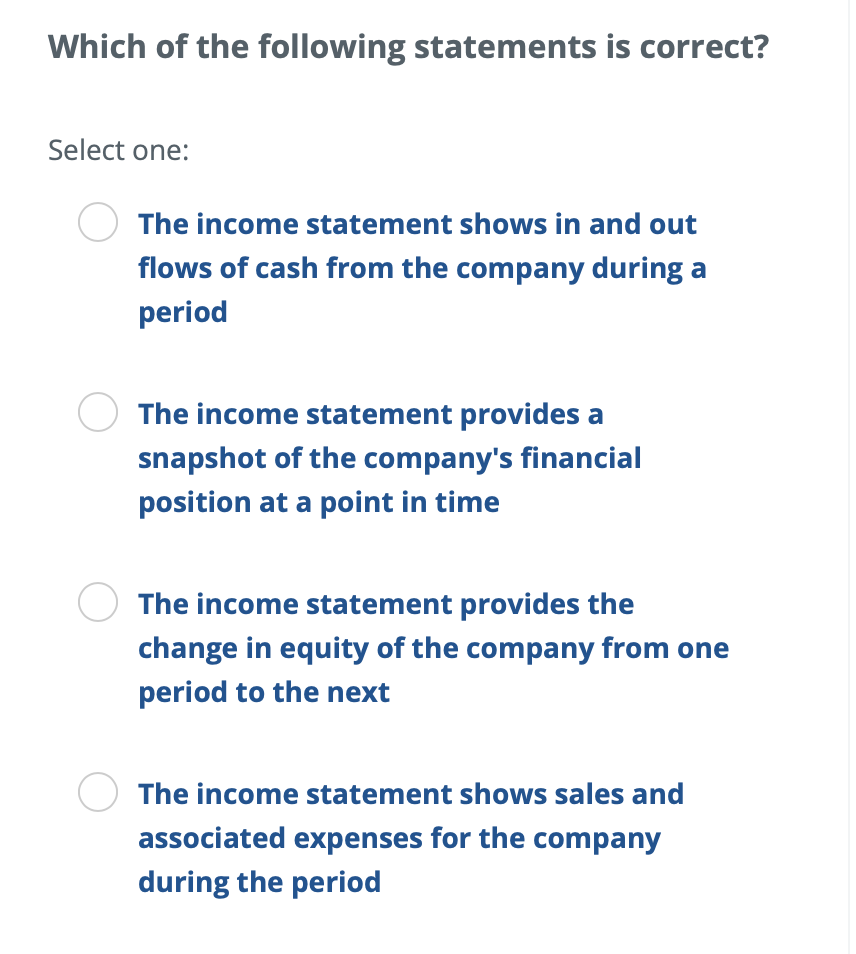Which Of The Following Statements Is Accurate

Imagine a bustling town hall, filled with residents eager to understand the intricacies of their local government. Sunlight streams through the large windows, illuminating faces etched with curiosity and a shared desire for clarity. A question hangs in the air, simple yet profound: Which of the following statements is accurate?
This deceptively straightforward inquiry, often encountered in civic discussions, educational settings, and even everyday conversations, unlocks a larger understanding of critical thinking and informed decision-making. It challenges us to dissect information, verify facts, and arrive at reasoned conclusions. The ability to discern truth from falsehood is, arguably, more vital than ever.
At its core, assessing the accuracy of a statement hinges on a multi-faceted approach. It requires not just a passive acceptance of information, but an active engagement with its underlying context, source, and potential biases. It's a skill honed through practice and a willingness to question assumptions.
The Anatomy of an Accurate Statement
An accurate statement, ideally, possesses several key characteristics. These attributes ensure it stands up to scrutiny and contributes to a well-informed understanding of a particular topic.
Firstly, factual correctness is paramount. The statement should align with verifiable evidence, whether gleaned from scientific studies, historical records, or reliable data sources.
Secondly, context is crucial. A statement, even if factually correct in isolation, can be misleading if presented without its necessary background or surrounding circumstances. It needs to be understood within its relevant framework.
Thirdly, lack of bias is essential. While complete objectivity may be unattainable, an accurate statement strives to present information impartially, avoiding language or framing that unfairly favors one perspective over another.
Common Pitfalls in Assessing Accuracy
The path to determining accuracy isn't always smooth. Several pitfalls can lead to misinterpretations and flawed conclusions.
Confirmation bias, for instance, is a pervasive challenge. It describes our tendency to seek out and interpret information that confirms our pre-existing beliefs, while dismissing evidence to the contrary.
Another common hurdle is the reliance on unreliable sources. Information from unverified websites, social media platforms, or anonymous sources should be approached with extreme caution. Cross-referencing information from multiple, credible sources is a vital step.
Furthermore, the misunderstanding of statistics can lead to inaccurate interpretations. Correlation does not equal causation, and statistical significance should be carefully considered.
Tools and Strategies for Verification
Fortunately, a range of tools and strategies can help us navigate the complex landscape of information and improve our ability to assess accuracy.
Fact-checking websites like Snopes, PolitiFact, and FactCheck.org provide valuable resources for verifying claims circulating online and in the media. These organizations employ teams of researchers who meticulously investigate statements and provide evidence-based assessments.
Cross-referencing information from multiple sources is a fundamental principle. Comparing reports from different news outlets, academic journals, and government agencies can help identify inconsistencies and uncover potential biases.
Consulting expert opinions can offer valuable insights. Researchers, academics, and professionals in relevant fields can provide informed perspectives and contextualize information.
Leveraging library resources is often overlooked in the digital age. Libraries offer access to a wealth of credible sources, including books, journals, and databases, often curated by expert librarians.
Case Studies: Accuracy in Action
Consider, for example, a statement circulating on social media claiming that "vaccines cause autism." This statement has been repeatedly debunked by scientific studies and public health organizations like the Centers for Disease Control and Prevention (CDC) and the World Health Organization (WHO).
Another example might involve a political advertisement stating that "Candidate X voted to raise taxes on the middle class." To assess the accuracy of this claim, one would need to examine the specific legislation in question, the candidate's voting record, and independent analyses of the bill's impact on different income groups. This information can often be found on reputable news websites, government websites, and fact-checking organizations.
Let's analyze the statement: "The Earth is flat." This is demonstrably false, supported by centuries of scientific observation and evidence, including satellite imagery and basic geometry. The overwhelming consensus within the scientific community is that the Earth is an oblate spheroid.
The Importance of Continued Learning
Developing the ability to assess accuracy is an ongoing process, not a one-time accomplishment. The information landscape is constantly evolving, and new challenges arise regularly.
Remaining curious, maintaining a healthy skepticism, and embracing lifelong learning are essential qualities. Actively seeking out diverse perspectives and engaging in respectful dialogue can broaden our understanding and refine our critical thinking skills.
The implications extend beyond individual decision-making. A society equipped with the tools to discern truth from falsehood is better positioned to address complex challenges, participate in informed civic discourse, and build a more just and equitable world.
The Role of Education
Educational institutions play a vital role in cultivating these skills. Critical thinking, media literacy, and information evaluation should be integral components of the curriculum at all levels.
Students need to be equipped with the ability to analyze sources, identify biases, and formulate well-reasoned arguments. They need to understand the scientific method and the importance of evidence-based reasoning.
By fostering a culture of inquiry and intellectual rigor, educational institutions can empower future generations to navigate the complexities of the modern world with confidence and discernment.
Conclusion: Embracing a Culture of Accuracy
In a world saturated with information, the ability to discern accurate statements from falsehoods is paramount. It empowers us to make informed decisions, participate meaningfully in civic discourse, and contribute to a more just and equitable society.
By embracing a culture of accuracy, we not only protect ourselves from misinformation but also foster a deeper understanding of the world around us. It's a journey that demands constant learning, critical thinking, and a willingness to challenge our own assumptions.
So, the next time you encounter the question, "Which of the following statements is accurate?", remember that it's not just a test of knowledge, but an invitation to engage in a thoughtful and empowering process of discovery. Embrace the challenge, and let the pursuit of truth guide your way.

![Which Of The Following Statements Is Accurate [FREE] which of the following statements is most accurate - brainly.com](https://media.brainly.com/image/rs:fill/w:750/q:75/plain/https://us-static.z-dn.net/files/d07/bc50374e70061724dba6eb507508775e.png)





![Which Of The Following Statements Is Accurate [ANSWERED] ts 2 Which of the following statements is correct with - Kunduz](https://media.kunduz.com/media/sug-question-candidate/20230202083429650454-5336301.jpg?h=512)


![Which Of The Following Statements Is Accurate [ANSWERED] Which of the following statements is most accurate? Energy](https://media.kunduz.com/media/sug-question/raw/80246260-1659893568.5148284.jpeg?h=512)
![Which Of The Following Statements Is Accurate [ANSWERED] Which of the following statements is correct The law of - Kunduz](https://media.kunduz.com/media/sug-question-candidate/20230509163258043308-5388672.jpg?h=512)

